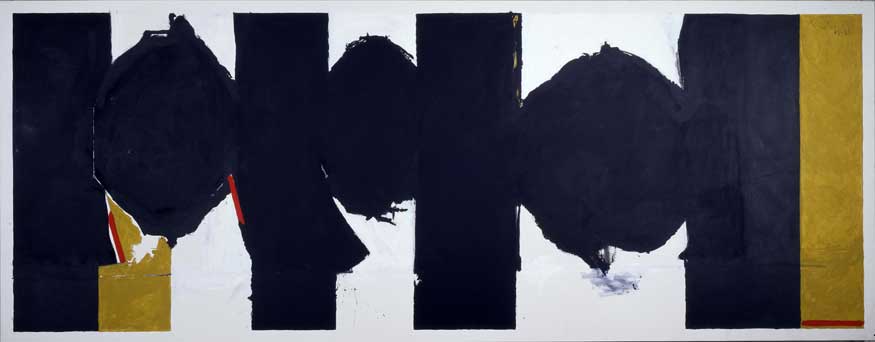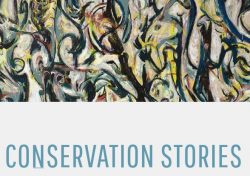STARTS
2017-07-08 00:00:00
Ends
2017-10-29 23:59:00
Admission is free.
Location
Pollock and Motherwell
Pollock and Motherwell: Legends of Abstract Expressionism
Jackson Pollock and Robert Motherwell are two of the most celebrated American painters from the mid-20th century. The exhibition emphasizes the radical innovation of American abstraction in mainstream art by featuring two monumental paintings, Mural and Elegy to the Spanish Republic, No. 126. It explores legends surrounding each work and artist by unpacking fact from fiction.
Mural, Pollock’s largest-ever canvas, was commissioned in 1943 by famed art collector and dealer Peggy Guggenheim. It established a new direction of massive scale and bold freedom for the movement that came to be known as Abstract Expressionism. Techniques used in Mural foreshadow methods Pollock would later develop in his best-known “poured” paintings. In 1948 Guggenheim gifted Mural to the University of Iowa and from 2012 to 2014 the painting underwent an immense conservation effort by The Getty in Los Angeles.
One of the most elegant works in the series due to its vastness and thoughtful integration of color, Motherwell’s Elegy to the Spanish Republic, No. 126 is a unique salute to Pollock. In 1972 it was commissioned by the director of the University of Iowa Museum of Art to hang with and directly respond to Mural’s larger-than-life size.


Robert Motherwell, Elegy to the Spanish Republic, No. 126, 1965-75. Acrylic on canvas, 77 3/4 x 200 1/4 inches. Purchased with the aid of funds from The National Endowment for the Arts with matching funds and partial gift of Robert Motherwell. University of Iowa Museum of Art, Iowa City. © Dedalus Foundation, Inc. Licensed by VAGA, New York, NY.
Exhibition Programs
Third Thursday
Thursday, July 20 | 6-9 p.m.
Mad About Abstract Expressionism
The Curator is IN!
Friday, July 28 | 7-8 p.m.
Join Sherèe Lutz for an engaging gallery talk about Pollock and Motherwell to separate the men from the myths.
Film with Q & A
Saturday, August 26 | 1-3 pm
Jackson Pollock’s ‘Mural’: The Story of a Modern Masterpiece
Music in the Galleries
Thursday, August 31 | 6:30 pm
Abstractions with Hermon Mehari
Talk
Thursday, September 7 | 6 pm
Abstract Expressionism and After

